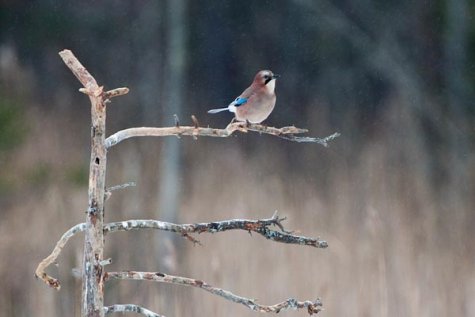Winter eagle camera guest - jay
Photo: Arne Ader
Translation: Liis
Jay.
| Jay |
Pasknäär
|
Jays prefer forest fringes with plenty of undergrowth. They are wary, but not shy of humans. Our feeding ground suits them well. In autumn this omnivorous bird collects its winter stores, such as acorns; its beak is suited to it. If you find oak seedlings growing in a forest the “planter” is very probably a jay; after all, one can’t remember the locations of all one's industriously hidden acorns.
The only one who possibly rivals the jay in oak-planting is the squirrel. After them - far, far behind - comes the “King of Sweden” in folk tales; the trees said to be planted by His Majesty mostly have their own individual names.
The only one who possibly rivals the jay in oak-planting is the squirrel. After them - far, far behind - comes the “King of Sweden” in folk tales; the trees said to be planted by His Majesty mostly have their own individual names.
The number of jays in Estonia in winter varies between 100 000 and 250 000 birds. A smaller bird than the crow, rather the size of a jackdaw, the jay carries our national colours on its folded wings, the body is pinkish grey, tail base white, the tail itself black and long but shorter than the magpie’s. When it is excited or irritated, the feathers on the top of its head rise
.








